Sycamore Salad Servers––Form Follows Function
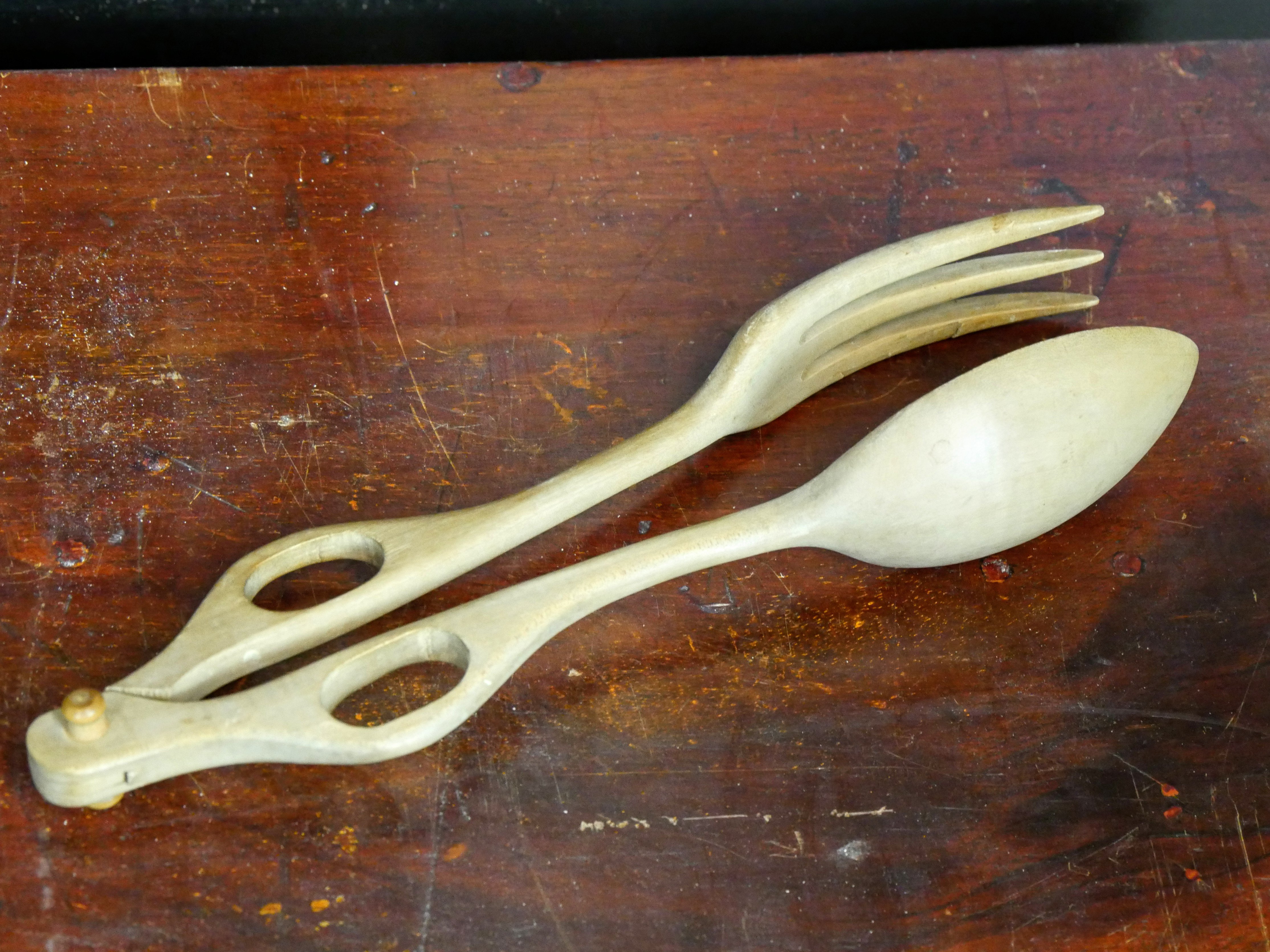
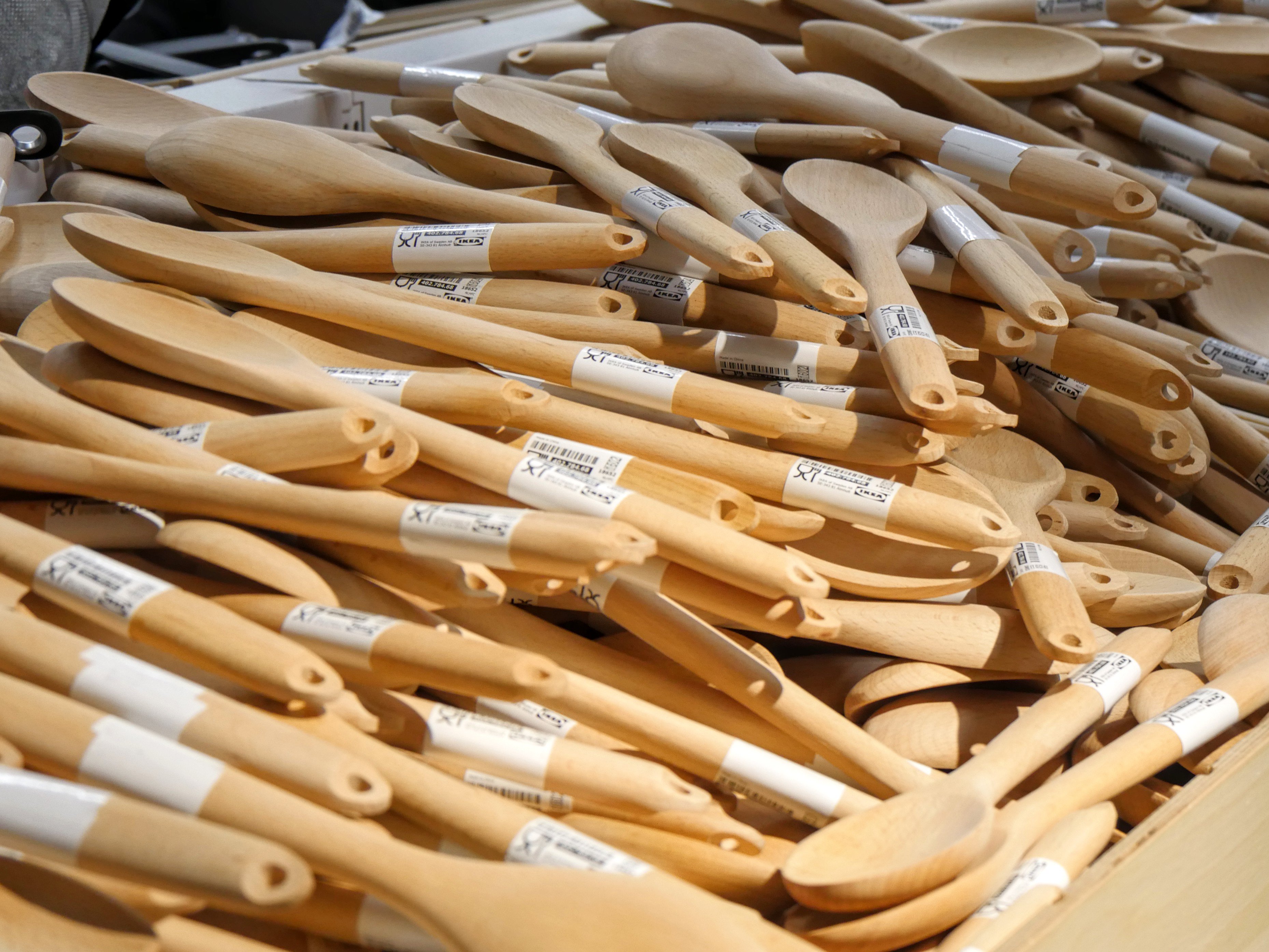
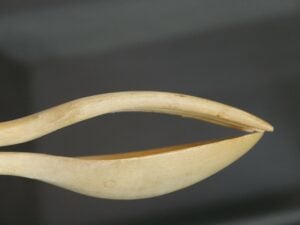
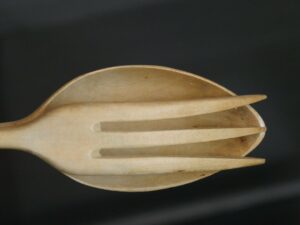
When I first saw them in the shop window I was more bemused by aspects of how they were made, but then realised that the whole process involved elements of woodworking such as heat bending, carving, fitting, shaping, tapping and dying and such things that developed the form from determining not just its functionality but how it would function. The scalloped spoon was for me the epitome of refined woodwork in sycamore as was the fork with its splayed outer tines curved to greet the fore edge of the spoon perfectly. Of course we’ve seen these in plastic, or at least I have. But they were cheap, nasty, stamped out, spring-loaded trash-versions, artlessly produced in plastic injection moulds by the thousands.
Making something like these is a few hours of skilled workmanship. It would have been a man that made them most likely and I cannot help but admire his sensitivity throughout the task of forming them so meticulously Perhaps four to six hours went into them from beginning to end. Imagine paying the equivalent of only £70 for such work. I’d pay that willingly for such craftsmanship. I don’t know if people would though. You see I think a man and a woman should be paid well for such work; perhaps double even that. Something they could live on and have a some put aside. Will we see such days? Are customers there to pay for this type of work? Personally I think they are. But then some will say I’m nuts. I know how to make them and can make them. I might use a variety of woods including sycamore and the skills a man would learn for future use are several. I’ll save these for a future video series and then a blog series too perhaps.


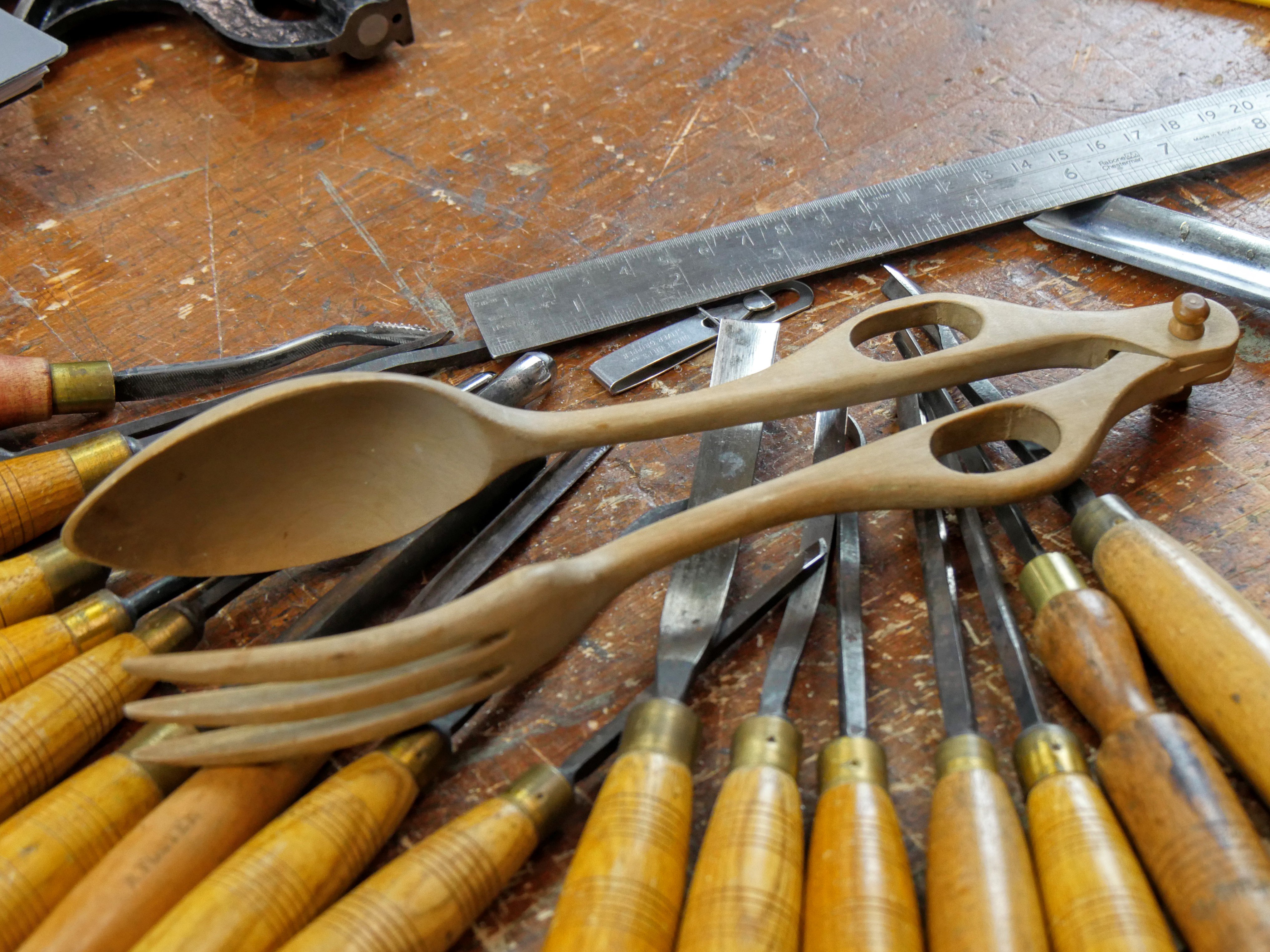
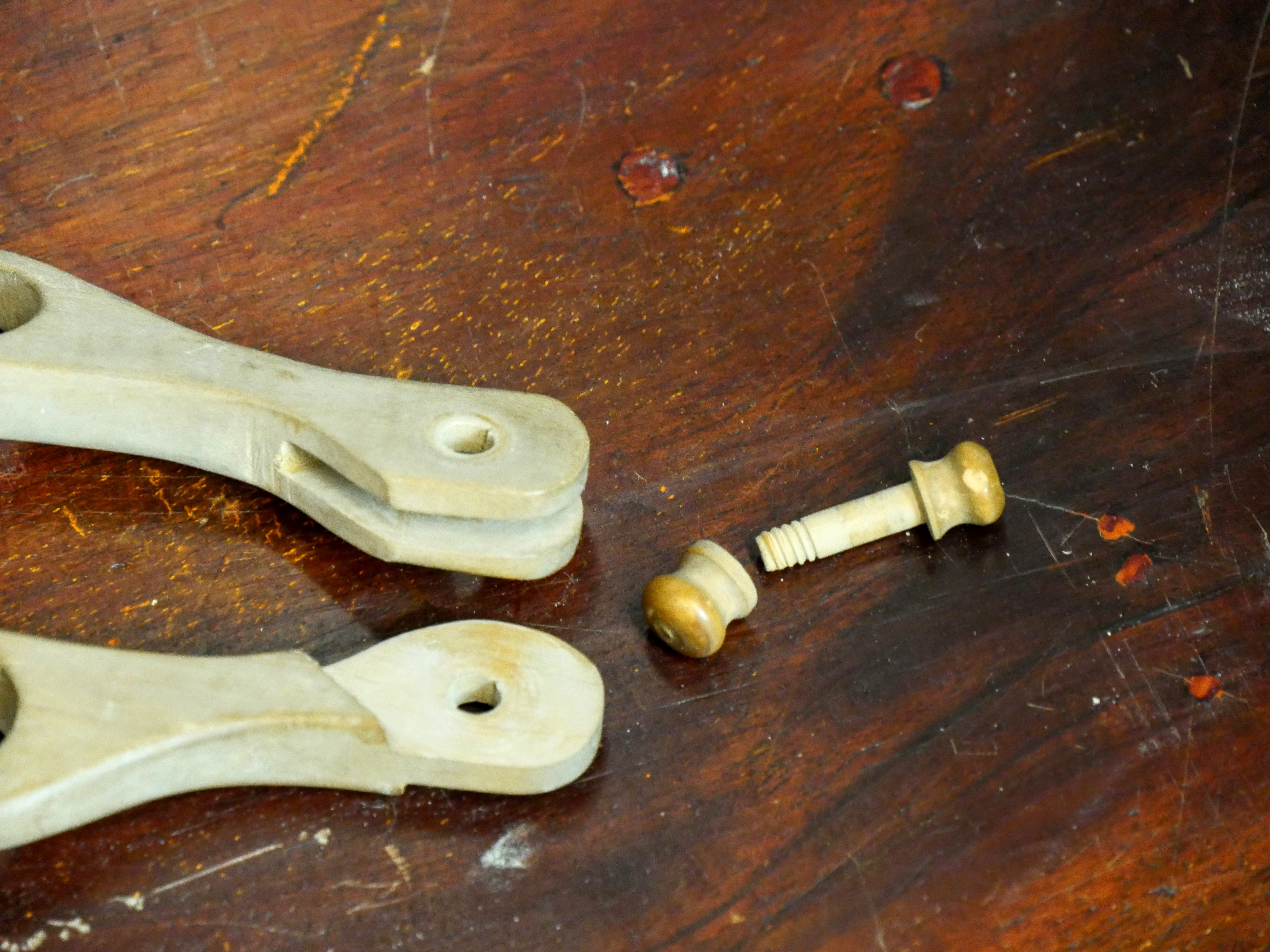
Check out Jane Mickelborough’s Instagram account to see beautiful carved spoons including a hinged pair.
https://www.instagram.com/janespoons/
I sometimes call it an “affordable luxury”. You’d be paying more than the simple utility, but where’s the simple utility in, say, a genuine team autographed soccer ball?
For someone who appreciates the time and effort, plus the look and feel of the wooden kitchen tool, it would be an affordable luxury.
For someone who values a dinner table filled with people who are dear to him or her, and know that they will understand the recognition being given to them by using such an “affordable luxury” to serve their food, it is worth it.
For myself, I asked a waiter at our favorite restaurant when we lived in Italy to teach me how to use a serving fork and spoon one handedly to serve almost anything onto an individual plate.
So, almost 50 years later, my guests and especially my wife appreciate the time I took to learn the technique. The investment in time was the “affordable luxury”, and I still enjoy using such a simple complement to dinner service.
Nice work.
consider the ability to perceive quality an innate sense – like sight or smell. It is how we distinguished a sharp stone tool from a rock. Some folks have more of it than others (just as our other senses vary from man to man). I can teach utility, but I can’t teach quality.
An old tissue box of quarter sawn white oak with splined finger joints made by a master came home with me from a church rummage sale for 25¢ or it would have been relegated to the trash heap. It was of greater quality than a similar tissue box hand-made by an artisan and sold on eBay for $40. (He was impressed with it when I send him some photos of the workmanship).
How many people failed to see quality in that simple object before it reached my hands? They saw what I saw, but somehow their sense of quality and mine were not in sync.
Some objects of quality (like the laptop we use to communicate) must, of necessity, be mass produced. Some hand-made objects are the result of many hours of labor and still lack quality. (I’m sure you see examples in your school shop).
When my fingers register the fit of two pieces of wood butting up against each other, do your fingers telegraph the same message to your brain as mine? If a sense of quality serves us as humans, it will survive the industrial revolution, and plastics, and CNC, and 3D printers. We are a young species.
Very well said. I often show friends pieces of work that are handmade and they scoff at the price. I then ask how many mass produced items of the same thing they would buy in a lifetime. If you buy a lifetime tool that’s handmade and well crafted, its near impossible to put a price on it. I hope there are still plenty of those willing to support craftsman and women in their trade.
It would not surprise me to see these in a modern art show. Form meets function. Can’t wait to see you make them.
Well stated Paul. This can be said about most anything skillfully handmade. Unless a client can appreciate the effort, talent and materials in the making of such items it is akin to casting pearls before swine.
I make custom furniture and the task is always educating a potential client in the value of having a custom piece that will last forever.
“Are customers there to pay for this type of work? Personally I think they are. But then some will say I’m nuts.”
I seen people flock for so called hand made items. There are people that will pay for it.
Hi Paul,
Well said and stated! I’d love to see the making this pair of salad servers as a future video or blog series.
Happy Holidays and all the best to you and your crew.
The choice of sycamore by the maker adds to it’s well thought out design. As most of you who work in wood know, sycamore is readily used for implements in contact with food items because it does not retain odors. Butcher blocks, spoons, bowls, breadboards, rolling pins etc.
All items of beauty succeed when ‘Function is related to Form’. These salad servers are as much sculpture as they are utilitarian and there in lies the beauty and the art
Paul.
Thoroughly enjoyed your blog.
You may remember we met at Penhryn, I brought you 100 chisel tangs.
You have inspired me, I am going to make one of these using all the skills passed on to me by some excellent tradesmen back in 1960.
Very best wishes to you and all those that you hold dear.
Fred Sutton
Ask anyone who is actually serving salad (from the bowl presumably).
This may be nice peace of woodwork, but give it a try to a few people who is actually using it.
No way. Cheap plastic ones are going to do better job. I know because i treasure one – Italian made for almost 30 years.
Leverage point on yours is on the wrong side.
I know that it has nothing with woodworking but this is your second slip into area you don’t know .
First one is how to sharpen kitchen knife.
Leverage salad? Really???
How you make threads? I have 2 wooden broken items, one miss the screw another miss threaded lid. I don’t know how to repair them.
sla,
Of course, you probably have to buy something. The large woodworking houses online, like Lee Valley and Highland have tap and die sets, in specific diameters, that will make the socket and wooden bolt that screw together. Since the salad server is a small item, and doesn’t carry a heavy cargo, I imagine your can get a relatively small diameter set without breaking the budget.
After you do the first project, there would be all sorts of other ideas for the tap and die set to be used for.
I also imagine that if you want to make a completely wooden leg vise for a Roubo bench, the tap and die set could easily come close to breaking the budget. Google “tap and die” because the technique is used a lot in metal work and there will be a ton of possible generic information for you.
On a woodworking point of view, this is a very well crafted object. Over so many years, you certainly have learned how to use it.
For my part, I would have flipped the fork in such a way that the convexity of the fork would match the concavity of the spoon. That is the way to use a spoon and fork one handledly. it ensure a good grip.
Now when using both hands, I use the spoon and fork as in this object but I always find that sla try to escape.
Professional wood threading equipment is expensive: 154,-EUR for 10mm diameter to 1160,-EUR for 62mm diameter in Dieter Schmidt Fine tools.
But you can try to make the equipment yourself.
Sylvain
Looking at your comment and then Momir elsewhere this seems to risk missing the whole point and the effort it took me to write it. The design and workmanship is indeed perfect. And despite opinions, which you have expressed, they work in every way. I respond only to say I won’t see a workman’s work diminished for the sake of opinion. They are still lovely works of art and functionality, which was the basis of my presentation. Have you both tried them and tested their efficacy?
Dear Paul,
1) I have no responsibility in Momir’s comment. What I said and how I said it was quite different. I would not permit myself to make comment about sliping outside your domain.
2) I did not say that it wouldn’t work as obviously it mimics what we do with two hands.
Sylvain
Ahah! Wrong end of the stick here, sorry. And I really do like that people have opinions to express so not offended so much as questioning validity.
Sylvain, that’s the one handed method I learned in 1970 in Italy.
If someone wants two hands, they do themselves.
😉 Jeff
here’s some boxwood spoons
https://www.youtube.com/watch?v=uldcxAcuwBE
Sadly, sales has more to do with marketing than craftsmanship.
A better economic model would be, to create cheap spoons like this on demand. Now they create 1000 and don’t have the buyer. Maybe it’s better we order the spoon, and they are produced after this, in the needed quantity. Technology could help here, online sales.
There is a need also for this cheap simple spoons, because there are a lot of folks that don’t care about design and other stuff, for them it’s a wooden or plastic spoon. Imagine we have only expensive craftsman spoons, I don’t think it’s possible today. I love a lot this type of hand made objects, but I know a lot of peoples that will prefer the other type, because for them this is just a spoon. Same attitude we have towards other objects, around us. Peoples are focused on a small number of objects they value, this values could change during lifetime. This is the life, we just have to do our best in our area, and have respect to others.